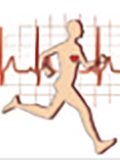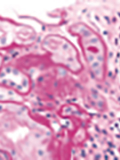The eLitMed.hu medical portal uses computer cookies for convenient operation. Detailed information can be found in the Cookie-policy.
Lege Artis Medicinae - 2019;29(04-05)
Content
[Physical inactivity and activity. Damage and benefit]
[Authors address the issue of inadequate physical activity worldwide and analyze their relationship with cardiovascular diseases and total mortality. In the inactivity "world map" it can be seen that in economically developed countries it is very common but other ethnic and regional factors also play a role and it is significantly more frequent at women. In our country this phenomenon due to combination of advanced civilization and computerization is also frequent. From 2000 to 2015, the trend of the presence of physical inactivity (FI) in the high income populations is steadily rising. Convincing evidence suggests that FI increases the risk of many common, serious diseases, including ischaemic heart disease, type 2 diabetes, breast cancer and colon carcinoma, and reduces the life expectancy. For these four diaseses, the incidence of FI occurs in about 1/3 of cases and 35% of total mortality. Its health value (PAF) ranges from 10 to 18%. Low (non-regular) exercise increases the risk of hypertension with or without family history. In subjects with moderate and intensive levels of physical activity (FA), there is a significantly lower mortality rate and the rate of occurrence of major cardiovasculars (CV) diseases compared to those with lower grade FA. Behind the positive effect of physical activity there is a multiple and complicated mechanism that manifests itself in the vascular system, in the physiological adaptation of the heart and in other metabolic and cellular effects. ]
[Perinatal faulty hormonal imprinting: early impact, late consequences]
[The description and basic study of hormonal imprinting were the first in the series of research, which led to the recognition of the role of perinatal chemical effects in the late (adult age) manifestation of some diseases and inclination to diseases. Today it is clear, that certain pathological states, as obesity or diabetes, hypo- or hyperactivity (autoimmunity and allergy) of immune system can be deduced to perinatal (hormonal or metabolic) imprinting. The perinatal hormonal (chemical) imprinting takes place at the first encounter between the developing hormone receptor and the target hormone which sets the binding capacity of the receptor for life. In the critical periods of ontogeny (in addition to the perinatal imprinting) it can be developed at weaning, in adolescence and in continuously dividing and differentiating cells during the whole life. It is provoked by considerable quantitative differences of the physiological hormone or the presence of strange target-hormone-like molecules. The faulty hormonal imprinting leads to the adult-age diseases at any time of life and is inherited epigenetically to the progeny generations. Faulty hormonal imprinting always could be present in earlier times however, at present, because of the erroneous multiplication of endocrine disruptors in the environment, nutrition and medicine, its importance is continuously growing. The effects of faulty hormonal imprinting seem to be dangerous however, it can be imagined in the far future also a positive effect by the transformation of the human endocrine system at an evolutionary route. In the metabolic or immunological imprinting as well, as in the DOHaD (Developmental Origins of Health and Disease) the foremost recognized hormonal (chemical) imprinting is materialized.]
[Treating methods of obstructive sleep apnea syndrome and related difficulties in daily practice ]
[Obstructive sleep apnea syndrome (OSAS) is the most common breathing disorder during sleep. Its incidence is between 2-4%, but in many cases, the disease is not recognized. It has many symptoms, but the most typical symptoms are loud snoring and daytime sleepiness. Treatment always consists of several elements depending on the patients’ specific needs. When deciding on which treatment to use efficiency and the patients’ compliance are the key factors. The necessity of the therapy can be determined by three criteria: clinical complaints (daytime discomfort), the severity of the breathing disorder and the accompanying cardiovascular diseases. Treating possibilities for the mild to moderate OSAS are lifestyle changes (losing weight, avoiding alcohol and sedative drugs), positional therapy, oral appliances, and varied surgical corrections. For patients with moderate to severe OSAS and mild OSAS with severe symptoms the first line therapy is continuous positive airway pressure. In addition to presenting new therapeutic options, the authors describe the role of the family physician in the care of apnea patients.]
[Rifaximin-α: More than antibiotic ]
[Antibiotic therapy might alter gut microbiome. The consequence of that is dysbiosis with or without immediate overt clinical manifestation. The beneficial effect of rifaximin, a non-absorbable broad spectrum antibiotic, in gastrointestinal and hepatic disorders is known for a long time. According to recent data rifaximin has not only antibiotic but also anti-inflammatory and, within antibiotics, a unique special eubiotic effect as well. It modulates the gut microbiome, restores eubiosis through increasing beneficial species’ count while not disturbing diversity.]
[Notes on the management of hypertension in chronic kidney disease ]
[The prevalence of hypertension among patients with chronic kidney disease is high, reaching more than 80%. Hypertension is both one of the main causes and also the most common consequence of chronic kidney disease. It is also a main factor responsible for the high cardiovascular morbidity and mortality in this patient population. Blood pressure control can improve patient outcomes, lower cardiovascular risk and slow down the progression of kidney disease, irrespective of the underlying cause. The optimal therapy should therefore focus not only on blood pressure reduction but also on renoprotection. Basic understanding of the renal pathophysiology in hypertension and renal effects of various medications is of paramount importance. In this review, we summarized cornerstones of the antihypertensive therapy in patients with chronic kidney disease. The management of patients receiving kidney replacement therapies, such as hemodialysis, peritoneal dialysis or transplantation requires special knowledge and experience, therefore it is not discussed here. The aim of this review was to allow non-nephrologist physicians to take care of their kidney patients with more confidence and effectiveness.]
[Immuno-oncology therapy in patients with non-small cell lung cancer]
[Despite decades of smoking cessation programs, and lung cancer screening programs, mortality due to bronchial cancer leads the mortality statistics among cancer deaths worldwide. Platinum-based chemotherapy has not fundamentally altered the effectiveness of treating non-small cell lung cancer (NSCLC). One of the newest approaches to the use of immunotherapeutic treatments in recent years is the so-called. use of immune checkpoint blocking agents. PD-1 and PD-L1 blockers of this type have been subjected to a large number of clinical trials in lung cancer and were reported by the tumor III.b / IV. stage. Last year, in 2018, we again came up with a milestone in the treatment of lung cancer immuno-oncology, as compared to the previous stage, III.a / III.b Durvalumab consolidation therapy for non-small cell lung cancer after inoperative, non-chemo-radiotherapy phase I, is based on the results of the PACIFIC clinical trial. PACIFIC was a triple-phase, randomized, double-blind, placebo-controlled, multicentre study to evaluate the efficacy and safety of durvalumab consolidation therapy, irresistible, III. patients with non-small cell lung carcinoma who have not progressed after platinum-based chemo-radiotherapy. The PD-L1 expression level of the tumor was not an admission criterion. In the study, 713 patients were randomized to durvalumab and placebo for 2:1, progression-free survival (PFS) and overall survival (OS) as their primary endpoint. Summarizing the results of the study, durvalumab provided significant benefit to patients at both endpoints. PFS and OS values were also significantly longer for durvalumab than placebo, and the safety profile of durvalumab was consistent with previous PD-1, PD-L1 inhibition tests.]
1.
Clinical Neuroscience
Is there any difference in mortality rates of atrial fibrillation detected before or after ischemic stroke?2.
Clinical Neuroscience
Factors influencing the level of stigma in Parkinson’s disease in western Turkey3.
Clinical Neuroscience
Neuropathic pain and mood disorders in earthquake survivors with peripheral nerve injuries4.
Journal of Nursing Theory and Practice
[Correlations of Sarcopenia, Frailty, Falls and Social Isolation – A Literature Review in the Light of Swedish Statistics]5.
Clinical Neuroscience
[Comparison of pain intensity measurements among patients with low-back pain]1.
Clinical Neuroscience Proceedings
[A Magyar Stroke Társaság XVIII. Kongresszusa és a Magyar Neuroszonológiai Társaság XV. Konferenciája. Absztraktfüzet]2.
3.
Journal of Nursing Theory and Practice
[A selection of the entries submitted to the literary contest "Honorable mission: the joys and challenges of our profession" ]4.
Journal of Nursing Theory and Practice
[End of Life and Palliative Care of Newborns in the Nursing Context]5.
Journal of Nursing Theory and Practice
[Aspects of Occupational Health Nursing for Incurable Patients ]










